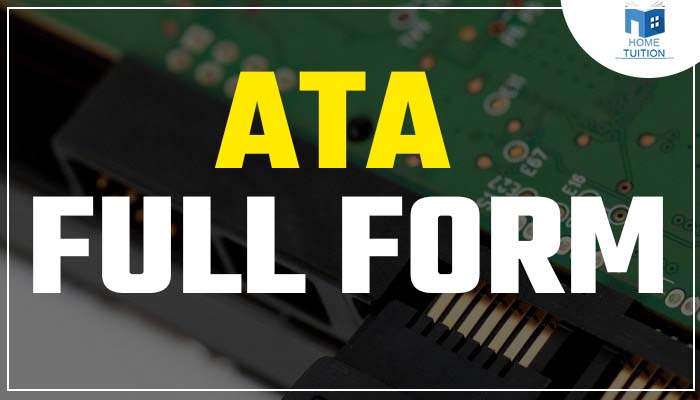Full form of ATA
Advanced technology attachment (ATA) describes the technology to improve business process efficiency. It may involve using technology to enhance communication, coordination, and execution within a business process. It may also include using technology to improve the efficiency and accuracy of the business process.
Advanced technological Attachment can help businesses improve their performance by better coordinating their activities, communicating more effectively, and making better decisions. It can also help improve the accuracy of the business process, leading to increased efficiency and reduced costs.
Background of ATA
ATA is a technology that allows IDE drives to be connected to a computer. The first version of ATA was released in 1986, and the latest version, ATA-8, was released in 2004. ATA allows different sizes of drives to be connected to a computer and will enable drives to be connected to a computer without having to restart the computer.

ATA Standards
ATA, ATA-1, and IDE are all types of computer memory interfaces. ATA stands for "Advanced Technology Attachment" and is the original interface type. ATA-1 is a newer version of ATA that supports larger hard drives. IDE is a unique type of interface that is based on ATA-1.
- ATA-2, EIDE, Fast ATA, Fast IDE or Ultra ATA:
- ATA-2, EIDE, Fast ATA, Fast IDE, and Ultra ATA are all IDE interface standards for connecting storage devices to a computer.
- ATA-2 is an older standard that EIDE replaced. EIDE is an improved version of ATA-2 that supports larger hard drives and provides faster performance.
- Fast ATA and Fast IDE are faster versions of ATA and EIDE that provide even faster performance.
- Ultra ATA is the latest and fastest version of the IDE, providing the highest performance of all.
- ATA-3 and EIDE: ATA-3 and EIDE are both data storage technologies. ATA-3 is an earlier version of the ATA storage specification, while EIDE is an improved version of the ATA specification.
- ATA-3 is an earlier version of the ATA storage specification, a computer storage technology. ATA-3 was introduced in 1996 and later replaced by the EIDE specification in 1997. The ATA-3 specification supports devices with a capacity of up to 8 GB.
- EIDE is an enhanced version of the ATA specification, a computer storage technology. EIDE was introduced in 1997 and is the successor to the ATA-3 specification. The EIDE specification supports devices with a capacity of up to 128 GB.
- ATA-4, ATAPI-4, and ATA/ATAPI-4 are all specifications for storage devices.
- ATA-4 is a specification for IDE drives. It defines the features that IDE drives must support to be called "ATA drives." These features include the use of PIO and DMA modes, the use of 16-bit addressing, and interrupt support.
- ATA-4 also defines a set of commands that IDE drives must support. These commands allow the operating system to control drive operations, including reading and writing data, formatting the drive, and setting drive parameters.
- ATA-4 was first published in 1994. It was superseded by the ATA-5 and ATA-6 specifications.
- ATA-5 specifies IDE drives that define even more features than ATA-4. These features include Ultra DMA modes, 32-bit addressing, and interrupt support. ATA-5 was first published in 1996. The ATA-6 specification replaced it.
- ATA-6 specifies IDE drives that define even more features than ATA-5. These features include Ultra DMA modes, 32-bit addressing, and interrupt support.
- ATA-6 was first published in 2000. It is the current version of the ATA specification.